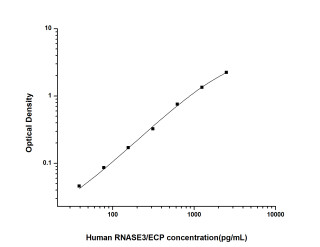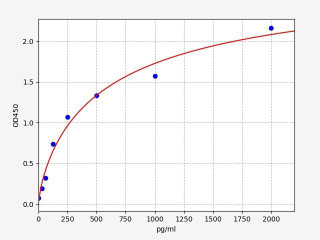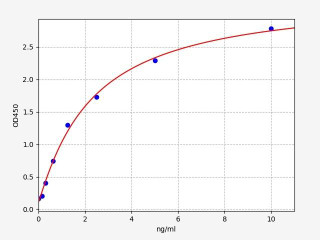What is RNAi? All You Need to Know
RNA interference (RNAi), also referred to as Post-Transcriptional Gene Silencing (PTGS), is the process by which RNA molecules silence genes in response to double-stranded RNA. RNA interference (RNAi) causes the downregulation or silencing of specific genes at the post-transcriptional level. It can lead to several effects depending on the targeted gene and its biological function.This article discusses RNAi, the various types of RNAi, its mechanism of action and RNAi therapeutics.
Key Takeaways:
- RNA interference (RNAi) is a process where RNA molecules silence genes, leading to gene downregulation or silencing.
- RNA, ribonucleic acid, is crucial for gene expression and protein synthesis.
- RNAi is key in development, immunity, and used as a research tool and therapeutic strategy.
- siRNA, miRNA, and shRNA are RNAi mediators, each playing specific roles in gene regulation.
- RNAi technology manipulates gene expression, aiding in gene function studies and therapeutic applications.
- RNAi has potential in disease control, animal model production, and other research applications.
- The RNAi market is growing, particularly for drug delivery technologies post-COVID-19.
RNA Definition
RNA, short for ribonucleic acid, is a single-stranded nucleic acid molecule that plays a fundamental role in gene expression and protein synthesis. The structure of RNA consists of a sugar-phosphate backbone made of ribose sugar molecules and phosphate groups. Attached to the sugar molecules are four types of nitrogenous bases: adenine (A), cytosine (C), guanine (G), and uracil (U). In RNA, uracil replaces thymine found in DNA.
RNA (Ribonucleic Acid) Structure
What is RNA Interference?
Gene silencing can be accomplished through a variety of mechanisms, including DNA methylation, histone modification, and RNAi. RNAi is a biological process in which RNA molecules are used to silence or degrade genes. It is the process of inhibiting gene expression, typically at the level of transcription or translation. RNAi regulateds gene expression in a variety of ways, including through the destruction of mRNA, the prevention of protein synthesis, and the alteration of chromatin structure.
RNAi is a mechanism for post transcriptional gene silencing first observed in plants in 1998. Since then, it has been found to play a role in a wide range of biological processes in both plants and animals. RNAi has emerged as a powerful tool for researchers studying gene function and disease pathogenesis.
The basis for RNAi is the production of small interfering RNAs (siRNAs), which are double-stranded RNA molecules that bind to complementary sequences in target mRNA and silence gene expression. siRNAs can be produced naturally or through the use of synthetic oligonucleotides.
RNAi Mediators - Types of RNAi
Different forms of RNA molecules mediate RNA interference (RNAi) and play distinct roles in regulating gene expression. Each of these RNA molecule contribute to the RNAi pathway by modulating gene expression at the post-transcriptional level. They offer versatile tools for studying gene function, therapeutic interventions, and exploring the intricate mechanisms of gene regulation.
Small Interfering RNA (siRNA)
Small interfering RNA (siRNA) is a double-stranded RNA molecule typically 20-25 nucleotides in length. It is artificially synthesized or produced through the cleavage of longer double-stranded RNA by the enzyme Dicer. siRNA serves as a guide molecule that pairs with complementary sequences of the target mRNA molecule. This binding triggers the degradation of the targeted mRNA by the RNA-induced silencing complex (RISC), preventing translation and leading to gene silencing.
MicroRNA (miRNA)
MicroRNAs (miRNAs) are endogenous, single-stranded RNA molecules approximately 21-23 nucleotides long. They are transcribed from specific genes and processed by enzymes to form mature miRNAs. miRNAs play critical roles in post-transcriptional gene regulation. They bind to the 3' untranslated region (UTR) of target mRNA molecules, leading to translational repression or degradation of the target mRNA. miRNAs can regulate the expression of multiple genes, influencing various cellular processes, including development, differentiation, and disease pathways.
Short Hairpin RNA (shRNA)
Short hairpin RNA (shRNA) is an artificial RNA molecule that mimics the structure of a hairpin loop. It can be introduced into cells through gene delivery methods or expressed from vectors. Once inside the cell, shRNA is processed by cellular machinery to form small interfering RNAs (siRNAs). These siRNAs then guide the degradation of target mRNA, leading to gene silencing. shRNA is commonly used in research applications and can provide long-term or stable gene knockdown effects.
siRNA VS miRNA
While both siRNAs and miRNAs are involved in post-transcriptional gene regulation through RNA interference (RNAi), they have distinct characteristics and functions.
| Characteristic | siRNA | miRNA |
| Origin | Exogenously introduced or synthesized | Exogenously introduced or synthesized |
| Structure | Double-stranded RNA molecules | Single-stranded RNA molecules |
| Gene Silencing | Designed to silence specific genes | Silences genes in a more general way |
| Mechanism of Action | Binds to mRNA and prevents translation | Binds to mRNA and degrades it |
| Target Specificity | More specific with fewer off-target effects | Can have more general effects and potential off-target effects |
How does RNA interference work?
The mechanism of RNA interference is complex and not fully understood. However, it is known that small RNAs play a key role in mediating RNAi. Small RNAs are thought to bind to complementary sequences in target mRNA, causing degradation of the mRNA or preventing translation.
The RNA interference pathway is initiated by the production of small interfering RNAs (siRNAs). These siRNAs are then loaded into an RNA-induced silencing complex (RISC), which cleaves complementary mRNA. This results in the destruction of the mRNA or the prevention of protein synthesis.
Schematic of RNAi pathway
RNAi related Gene Regulating Mechanisms
There are three main modes by which gene expression can be regulated at various stages of gene expression.
Transcriptional RNA interference
Transcriptional RNAi refers to the silencing or downregulation of gene expression at the level of transcription. It involves the inhibition of RNA polymerase, the enzyme responsible for transcribing DNA into RNA. Transcriptional RNAi can be mediated by several mechanisms, such as DNA methylation, histone modification, and chromatin remodeling. These processes alter the structure of DNA and chromatin, leading to the repression of gene transcription. By preventing or hindering the binding of transcription factors and RNA polymerase to the gene's promoter region, transcriptional RNAi effectively reduces the production of mRNA molecules.
Post-transcriptional RNA interference (PTR)
Post-transcriptional RNAi occurs after the synthesis of mRNA molecules from DNA and involves the regulation of gene expression at the mRNA level. It primarily functions by degrading or preventing the translation of specific mRNA molecules. Post-transcriptional RNAi is typically mediated by small RNA molecules, including small interfering RNAs (siRNAs) and microRNAs (miRNAs). These small RNA molecules, either introduced exogenously or derived endogenously, bind to complementary sequences on the target mRNA molecules. This binding can lead to the degradation of the mRNA or the inhibition of its translation into proteins, effectively reducing the expression of the targeted gene.
Epigenetic RNA interference
Epigenetic RNAi refers to the modulation of gene expression through the regulation of epigenetic marks, which are heritable changes in gene activity that do not involve alterations in the underlying DNA sequence. Epigenetic marks include DNA methylation, histone modifications, and non-coding RNAs. Non-coding RNAs, such as long non-coding RNAs (lncRNAs), can interact with chromatin and influence gene expression by recruiting chromatin-modifying complexes or interfering with transcriptional machinery. Epigenetic RNAi can result in long-term and heritable changes in gene expression patterns, playing a crucial role in development, cellular differentiation, and disease.
RNAi interference technology
RNA interference (RNAi) technology is a powerful genetic tool that allows the selective and specific silencing of gene expression. It harnesses the natural cellular process of RNAi to regulate gene activity by using small RNA molecules. RNAi technology involves the introduction or production of synthetic or endogenous small interfering RNA (siRNA) or microRNA (miRNA) molecules that target specific messenger RNA (mRNA) molecules.
RNA interference technology has revolutionized the field of molecular biology and provided powerful tools for manipulating gene expression. It offers a precise and specific approach to studying gene function, understanding disease mechanisms, and developing targeted therapies.
Related Products
Related Kits

| Human RNASE3/ECP ELISA Kit | |
|---|---|
| ELISA Type | Sandwich |
| Sensitivity | 23.44pg/mL |
| Range | 39.06-2500pg/mL |

| Human VEGF ELISA Kit | |
|---|---|
| ELISA Type | Sandwich ELISA, Double Antibody |
| Sensitivity | 18.75pg/ml |
| Range | 31.25-2000pg/ml |

| Human GAPDH ELISA Kit | |
|---|---|
| ELISA Type | Sandwich ELISA, Double Antibody |
| Sensitivity | 0.094ng/ml |
| Range | 0.156-10ng/ml |
RNAi Applications
Gene Function Studies
RNAi is extensively used to study gene function and understand the roles of specific genes in cellular processes and disease pathways. By silencing or downregulating the expression of target genes, researchers can observe the resulting phenotypic changes and gain insights into gene function and molecular mechanisms.
RNAi's Role in Disease - RNAi Therapeutics
While RNAi is a powerful tool for studying gene function, it also has the potential to be used as a therapeutic strategy for a wide range of diseases. RNAi is a promising therapeutic strategy for a wide range of diseases, including Alzheimer's disease, Huntington's disease, and cancer.
RNAi can be used to boost the expression of protective genes. For example, siRNAs that target the Huntington gene have been shown to increase levels of brain-derived neurotrophic factor (BDNF), a protein that protects neurons from death. In cancer, RNAi may be used to silence genes that promote tumor growth. For example, siRNAs that target the oncogene Bcl-2 have been shown to induce apoptosis in cancer cells. RNAi is also being explored as a treatment for viral infections. siRNAs that target viral mRNA can prevent the synthesis of new viruses and help the body clear existing infections.
Functional Genomics
RNAi allows for large-scale screening of gene function and identification of novel genes involved in specific cellular processes or disease states. Genome-wide RNAi screens enable the systematic knockdown of genes and subsequent analysis of the resulting phenotypes, providing valuable insights into gene networks, signaling pathways, and disease mechanisms.
Crop Improvement
RNAi technology has been applied in agriculture to enhance crop traits, such as pest and disease resistance, improved nutritional content, and increased yield. By targeting specific genes in pests or pathogens, RNAi can be used to inhibit their growth or survival, offering a potential alternative to traditional chemical pesticides.
Animal Models
RNAi is widely utilized to create animal models with specific gene knockdowns, allowing researchers to study the effects of gene silencing on development, disease progression, and phenotypic characteristics. It enables the investigation of gene function in a controlled and specific manner, contributing to our understanding of various biological processes.
RNAi vs CRISPR
RNAi and CRISPR are both powerful tools for gene silencing. However, there are some key differences between the two.
| RNAi | CRISPR |
| Natural Process occuring in all cells | Man made technology, adapted from a natural mechanism in bacteria |
| Reversible | Irreversible |
| Can be used to silence multiple genes at once | Can only target one gene at a time |
| More specific | Potential for off-target effects is higher |
Future of RNAi
At present, most studies use RNAi as a tool for identification of gene function. These are not the only applications that RNAi can be used for. Disease control (viruses; bacterial diseases; parasites; genetic tumors), production of animals of commercial interest and production of animal models for research use are just some of the other areas that RNAi is used. Other possible future applications include: control of drug consumption, pain relief, modulation of sleep, among many others.
Between 2014 and 2019, the global RNAi drug delivery market has increased by 7% with it expected to continue to grow over the next 5-10 years. The demand for RNAi drug delivery technologies has increased since the spread of COVID-19 also.
Assay Genie Blogs
Check out the Assay Genie Blog where we cover topics such as:
Recent Posts
-
The Double-Edged Sword: How Neutrophil Traps Can Both Help and Hinder Cancer's Spread
The Double-Edged Sword: How Neutrophil Traps Can Both Help and Hinder Cancer's Spread In the intric …21st Nov 2025 -
Tumor-Associated Macrophages: Double Agents in the Cancer Battlefield
Tumor-Associated Macrophages: Double Agents in the Cancer Battlefield In the intricate theater of t …20th Nov 2025 -
Liquid Biopsy and ctDNA: The New Frontier in Cancer Detection
Imagine a future where a simple blood test could detect cancer in its earliest stages, long before s …20th Nov 2025

